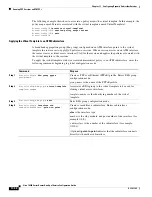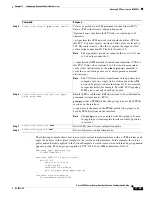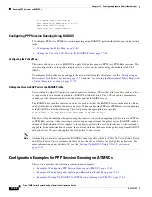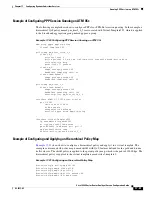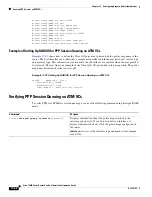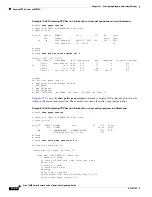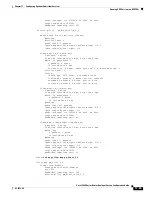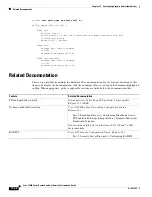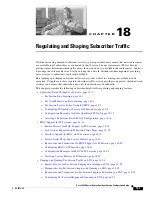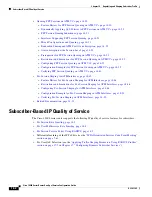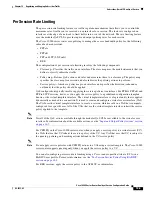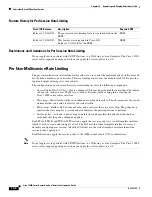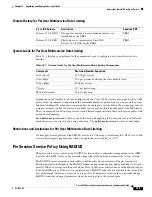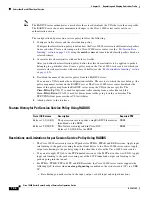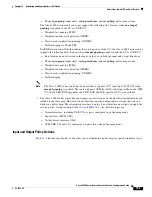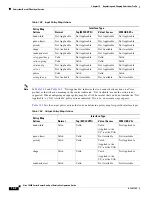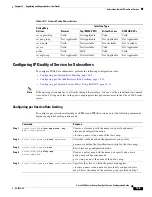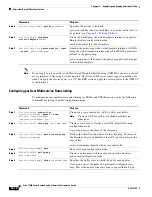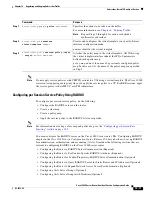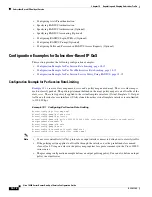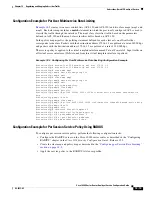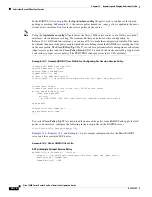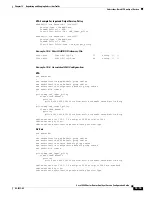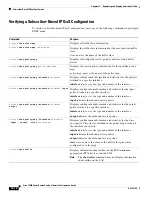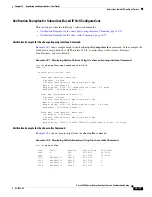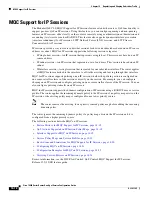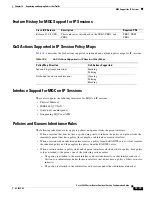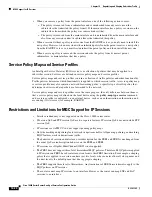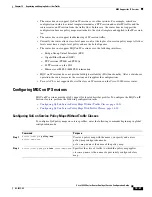
18-6
Cisco 10000 Series Router Quality of Service Configuration Guide
OL-7433-09
Chapter 18 Regulating and Shaping Subscriber Traffic
Subscriber-Based IP Quality of Service
Note
The RADIUS server authenticates a user before the server downloads the VSA that is in the user profile.
The RADIUS server does not communicate changes to the Cisco 10000 series router until user
authentication occurs.
The configuration of per session service policy involves the following:
1.
Configure traffic classes and the classification policy.
Configure the classification policy to define how the Cisco 10000 series router differentiates packets
from each other. Create a class map on the Cisco 10000 series router (see the
“Per Session Rate
Limiting” section on page 18-3
) using the
match
command to match and classify packets based on
selected criteria.
2.
Associate class characteristics with each class of traffic.
After you define the classification policy, define the class characteristics to be applied to packets
belonging to a particular class. Create a policy map on the Cisco 10000 series router in which you
associate class characteristics with each class of traffic (see the
“Per Session Rate Limiting” section
on page 18-3
).
3.
Download the name of the service policy from the RADIUS server.
You can use a VSA to make the configuration scalable. The service to which the user belongs (the
policy map name) resides on the RADIUS server. The Cisco 10000 series router downloads the
name of the policy map from the RADIUS server using the VSA in the user profile. The
Cisco-Policy-Up
VSA 37 is used for upstream traffic coming from a subscriber and the
Cisco-Policy-Down
VSA 38 is used for downstream traffic going toward a subscriber. The
PPP/VPDN client processes these VSA attributes.
4.
Attach policies to the interface.
Feature History for Per Session Service Policy Using RADIUS
Restrictions and Limitations for per Session Service Policy Using RADIUS
•
The Cisco 10000 series router routes IP packets for PPPoA, PPPoE, and RBE sessions. Apply input
rate limiting to the packets coming from the client device to the Cisco 10000 series router. Apply
output rate limiting to the packets going to the client device from the Cisco 10000 series router.
•
You can also apply IP QoS to the PPP tunneled sessions at the L2TP network server (LNS). Apply
input rate limiting to the packets coming out of the L2TP tunnel and output rate limiting to the
packets going into the tunnel.
•
For PPPoA, PPPoE, PPP in L2TP, and RBE sessions, the Cisco 10000 series router supports the
following QoS features when
no atm pxf queuing
is enabled or the virtual circuit (VC) is a UBR
VC:
–
Rate limiting on each session in the input, output, or both input and output directions
Cisco IOS Release
Description
Required PRE
Release 12.2(15)BX
The per session service policy using RADIUS feature was
introduced on the PRE2.
PRE2
Release 12.2(28)SB
This feature was integrated in Cisco IOS
Release 12.2(28)SB for the PRE2.
PRE2

